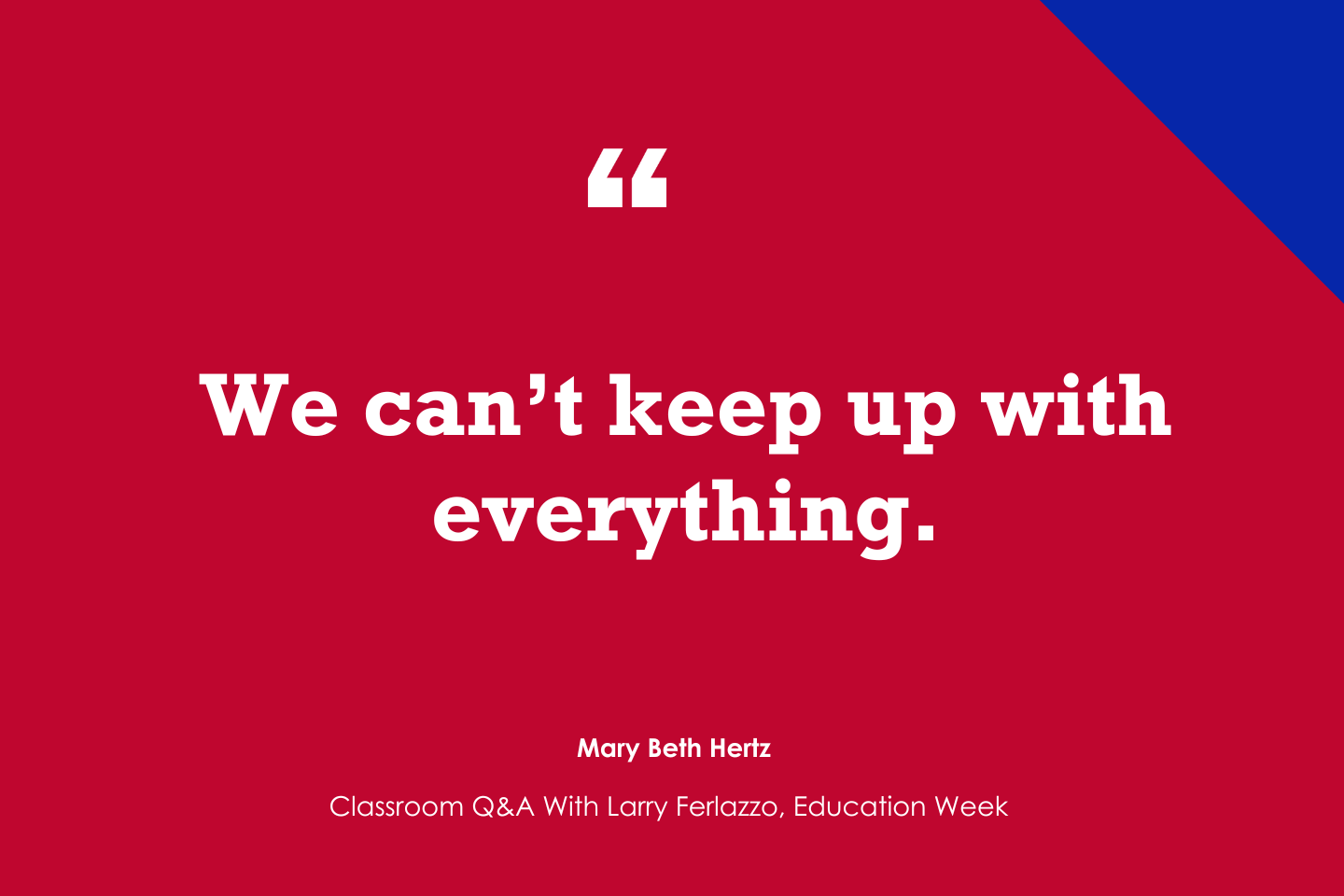Reading Time: 3 minutes
The world is entering a golden age of Generative Artificial Intelligence (GenAI) underpinned by recent breakthroughs such as OpenAI models. ChatGPT could be the powerful impetus needed to shift from understanding assessment as the assurance of an educational “product” to assessment as learning. Many instructors may intend to assess students directly, but that is simply not scalable. If your class load is partially or fully online, most likely students are not doing the work as you had hoped. In fact, Forbes has stated “Considering that 90% of students are aware of ChatGPT, and 89% of survey respondents report that they have used the platform to help with a homework assignment, the application of OpenAI’s platform is already here.”
Many faculty simply rely on AI detector tools but these AI detection tools are not even close to reliable and students already know how to work around them. My concern is that students will spend more time attempting to circumvent the system than learning the content and for college students who are taking a fully online class, observing students during their writing exercises can of course be challenging. At this point in our AI history, it behooves us as faculty to get creative with assessment, to either switch up text-based assignments or to find new non-textual ways of assessment.
Encouraging students to be creative, engage in role-playing, and think critically during lectures helps them learn more deeply compared to just memorizing information. ChatGPT can act as a debate partner, presenting counterarguments to challenge students’ positions. By exposing students to various viewpoints, chatbots like ChatGPT can assist them in identifying weaknesses in their own thinking.
Creative text-based assessments using ChatGPT
Important to our understanding as faculty is to see examples of new ways to incorporate assessment using ChatGPT. Consider these assessment models and examples in your class:
Virtual interview simulation:
Students can use ChatGPT to simulate a conversation with a historical figure, a fictional character, or an expert in their field of study. This exercise can help them develop interviewing skills, explore different perspectives, and enhance their understanding of specific topics.
Futuristic scenario building:
Ask students to describe a future scenario related to their field of study. They can interact with ChatGPT to brainstorm and develop a narrative that explores potential advancements, challenges, and societal impacts. This encourages creative thinking and foresight.
Philosophical debates and Socratic opponent:
Assign students a topic related to their coursework and have them engage in a philosophical debate with ChatGPT. This exercise helps them articulate and defend their views while also considering opposing arguments, fostering critical thinking. ChatGPT can create a series of Socratic-style questions and responses to stimulate thoughtful consideration and discussion on any topic.
Character creation and storytelling:
In literature or creative writing classes, students can collaborate with ChatGPT to develop unique characters and plotlines. This can be a fun way to explore narrative structures, character development, and creativity in storytelling.
Language translation challenge:
For language or linguistics courses, students can use ChatGPT to translate a piece of text into a different language. This not only tests their language skills but also introduces them to the nuances of translation and the challenges involved.
Historical role-playing:
Students can immerse themselves in historical events by interacting with ChatGPT as key figures from the past. This allows them to explore different perspectives, understand historical context, and make connections to their coursework.
Scientific problem solving:
In science or engineering courses, students can present a complex problem to ChatGPT and work collaboratively to explore potential solutions. This encourages them to apply theoretical knowledge to real-world challenges.
Coding challenge and debugging:
For computer science students, they can work on coding challenges with ChatGPT acting as a virtual coding partner. This not only tests their coding skills but also enhances their ability to troubleshoot and debug code.
Business strategy simulation:
In business or management courses, students can use ChatGPT to simulate a business scenario. They can discuss and develop strategies for marketing, decision making, and problem solving within a simulated business environment.
Interactive research assistance:
Students can leverage ChatGPT as a research assistant. They can ask questions related to their research topics, receive suggestions for sources, and engage in discussions to refine their research questions and methodologies.
Written by Corinne Hoisington, full-time Professor of Information Systems Technology at Central Virginia Community College in Lynchburg, Virginia. Professor Hoisington is the recipient of the Microsoft Most Valuable Professional award in Computer Programming. Corinne has authored over 30 textbooks with Cengage/National Geographic on topics such as Microsoft 365, AI, Microsoft Windows, SharePoint, Android Boot Camp Java, Technology Now, and Visual Basic.
For even more on GenAI in higher education, join us for our upcoming webinar, “Lessons From Sci-Fi: Teaching & Learning With GenAI.” Discover lessons about AI for education through science fiction books and films.
The post In the Blink of an AI: Shifting Assessments in a ChatGPT World appeared first on The Cengage Blog.
Reading Time: 3 minutes The world is entering a golden age of Generative Artificial Intelligence (GenAI) underpinned by recent breakthroughs such as OpenAI models. ChatGPT could be the powerful impetus needed to shift from understanding assessment as the assurance of an educational “product” to assessment as learning. Many instructors may intend to assess students directly, but that is simply […]
Read More…
The post In the Blink of an AI: Shifting Assessments in a ChatGPT World appeared first on The Cengage Blog. Teaching Strategies, Artificial Intelligence, Student Engagement, Student Success The Cengage Blog







